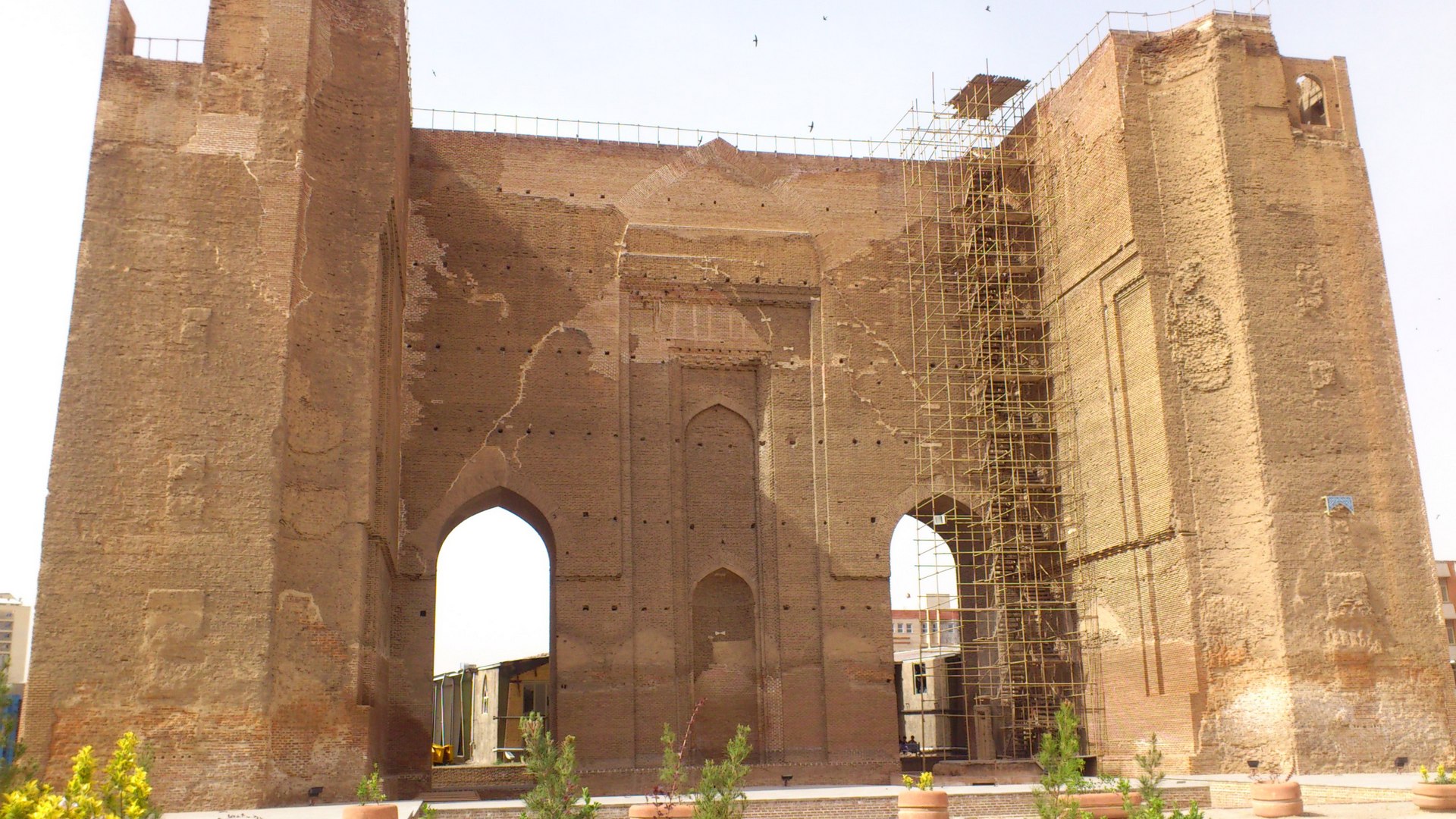Description
Property Name: Ark e Ali Shah Mosque, Masjid-i Jami Ali Shah
Inventory No: 98-411-2
Date of infill of the inventory form: 2009-12-08
Country (State party): Iran
Province: Tabriz
Town:
Geographic coordinates: 38° 4′ 20.63″ N
46° 17′ 18.05″ E
Historic Period: 13th century, 1st half
Year of Construction: 1322
Style: Ilkhanid
Original Use: Mosque
Current Use: Mosque
Architect: Tajeddin Ali Shah Ghilani
Significance
The mosque is one of the few examples of massive brick structured architecture in Persia at Ilkhanid period. The span of its iwan is 10 cubits (4.57m) higher and wider than Tagh-e-Kasra of Ctesiphon Palace (the principal city of the Sasanid Empire, about 32 km southeast of Baghdad) and it is also wider and higher than any of the European cathedrals of its time.
Selection Criteria
i. to represent a masterpiece of human creative genius
ii. to exhibit an important interchange of human values, over a span of time or within a cultural area of the world, on developments in architecture or technology, monumental arts, town-planning or landscape design
iii. to bear a unique or at least exceptional testimony to a cultural tradition or to a civilization which is living or which has disappeared
State of Preservation
Ark e Ali-Shah Mosque is a remnant of an educational-religious complex organized around a big four iwaned courtyard and three gates. The complex includes a mosque, a minaret and a madrasah which were all built in the Ilkhanid period. The vault of the mosque collapsed and the structure broke down within a few years after construction, but the building was used for several centuries. During the Qajar era it was used as a military post, and storage facility for weapons. Then it got damaged during wars up to 1941 when its courtyard turned into a public park. In recent years after 1980s, the park got closed. Tabriz city theater building, which was behind the mosque, was destroyed for the construction of huge Friday mosque next to the remains. Therefore, this monument has faced lots of intervention.
In the 1990s and 2000s, a rehabilitation and renovation project was executed by the Iranian Organization for Cultural Heritages. During this rehabilitation, however, all of the remaining Qajar era development from Arg citadel were destroyed. At the same period, a new big mosque was built next to the Arg citadel. The superstructure of the new mosque undermine the architecture of Arg citadel.
References
Dibadj, I., Athar-i Bastani wa Abniya-i Tarikh-i Azarbaydjan (Historical Buildings and Heritages of Azerbaijan), Tahran: Shura-yi Markazi Djashan Shahinsha, Iran, 1966.
Kiyani, M.Y., Memari wa Shahrsazi Iran: Be Riwayat Taswir (Iranian Architecture and Town planning: A Pictorial Record), Hawza-i Hunari Sazman-i Tablighat-i Islami-i Iran, Tahran, 1993.
Kiyani, M.Y., Memari-i Iran dar doreh Islami( Iranian architecture in Islamic period), Iran, Samt, 2000.
Soltanzade, H., Tabriz A Solid Cornerstone of Iranian Architecture, Cultural Research Bureau Tehran, 1997.
Pirniya, M. K., Mimariyan, G. H., Sabkshinasi-i Mimari-i Irani (Stylistics of Persian Architecture) Pajuhandeh, Tehran, 2004.
Pope, Arthur Upham, Persian Architecture, Soroush Press, Tehran, 1976.
Purhussein Khuniq, I., Tabriz be Riwayat Taswir (Tabriz Pictorial Introduction), Tahran, Danial, 2001.
Wilber, Donald N., The Architecture of Islamic Iran: The Ilkhanid Period, New Jersey: Princeton University Press, 1955.
Archnet Website: http://www.archnet.org
Unesco World Heritage Website, http://whc.unesco.org


